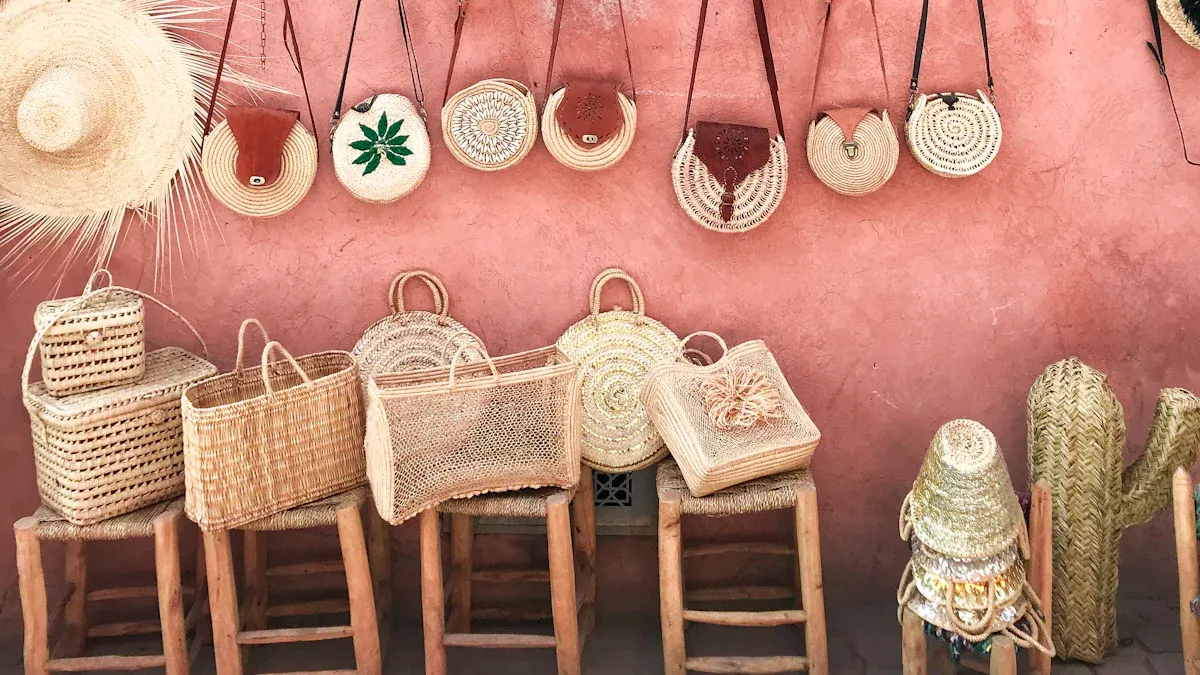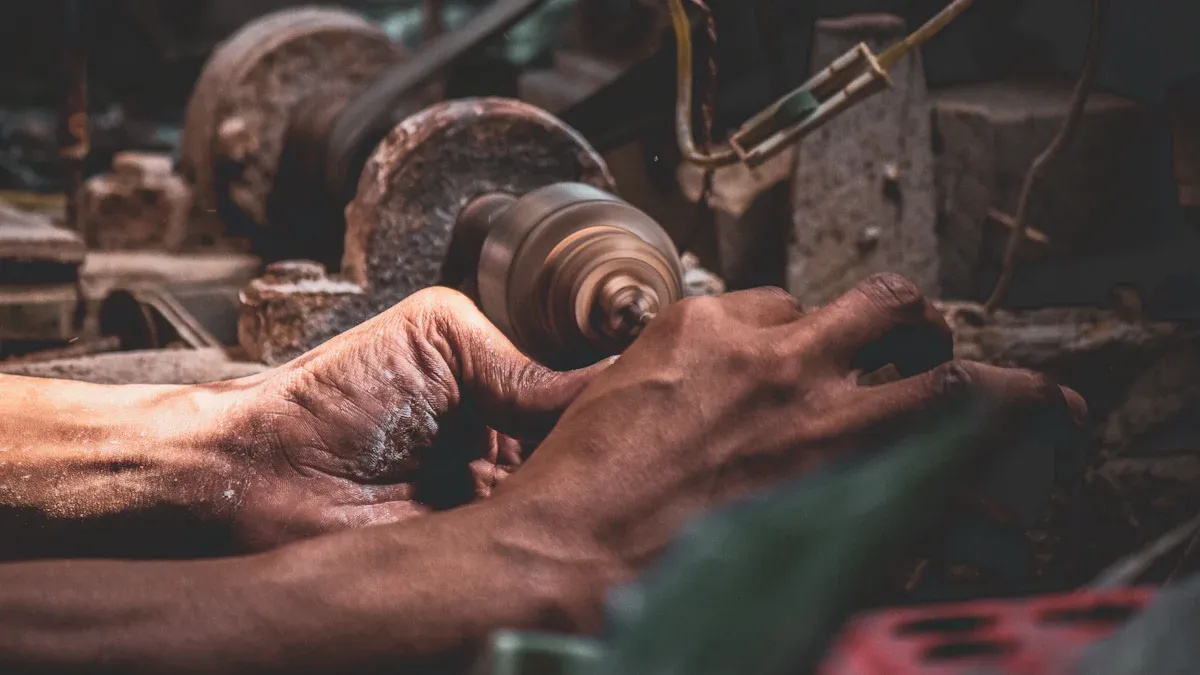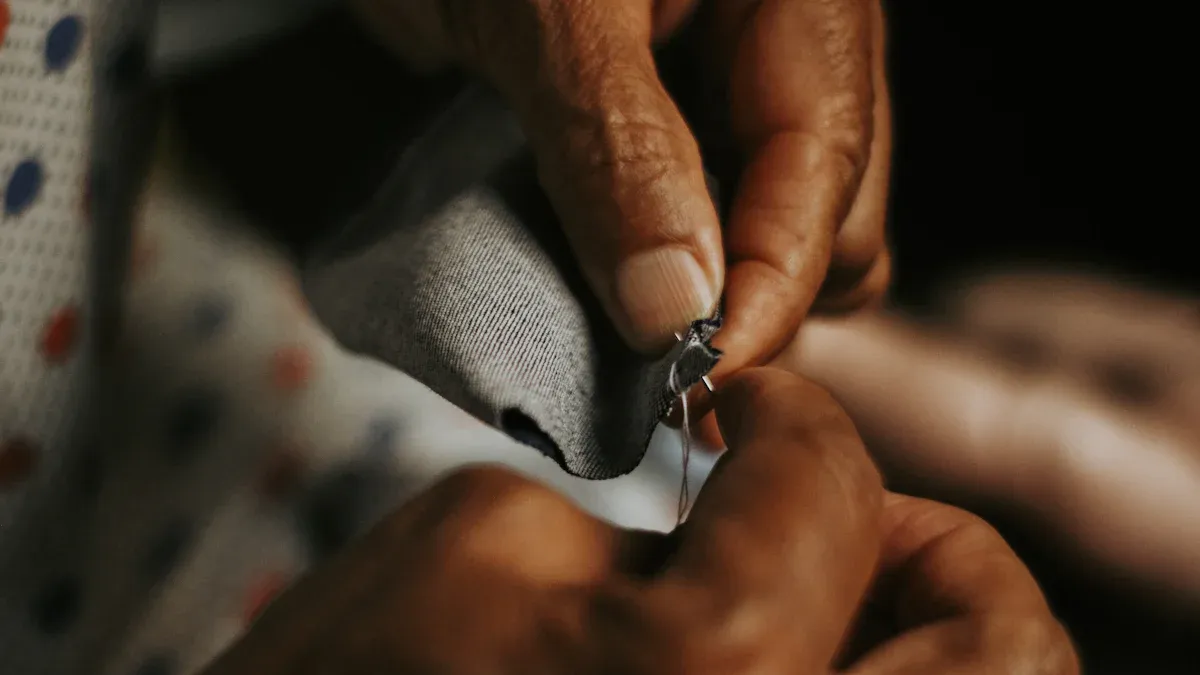
Exquisite craftsmanship means making things with great skill and care. People notice how artistry affects their lives when they see small details in good products. Many high-end customers want the best quality and value the artistry in each item. A recent study says 85% of rich buyers want exquisite craftsmanship in luxury items, and 75% feel close to a brand’s heritage.

When people care about artistry and purpose, they feel more satisfied. Every detail, from design to finish, can make daily life feel special.
Key Takeaways
-
Exquisite craftsmanship means making things with great skill and care. It needs attention to every detail. People use the best materials. They mix old and new ways to make things.
-
Handmade luxury items last longer and work better. They make people feel special. These items tell stories and show culture.
-
Artisans keep traditions alive by learning skills for many years. They add their own creativity to each piece.
-
People can spot real craftsmanship by looking for fine details. They check for signatures, certifications, and unique designs. These things show care and quality.
-
Supporting artisans helps keep culture alive. It helps local economies grow. It also encourages making meaningful and eco-friendly products.
Exquisite craftsmanship defined
Meaning and origins
Exquisite craftsmanship is not just about making things by hand. It means using special skill and care that people notice everywhere. Over time, the meaning has changed as people and tools have changed. In ancient Egypt, workers made jewelry that showed power and meaning. They used smart metalworking and careful design. In the Renaissance, goldsmiths in Europe mixed art with use. Rich families, like the Medici, helped these artists. In the Victorian era, people liked objects that held memories. Later, Art Nouveau and Art Deco brought new styles and ideas. Today, exquisite craftsmanship uses both old and new ways. Makers use computers and eco-friendly materials. Now, it means skill, creativity, symbols, and feelings.
Craftsmanship has a long story. Medieval guilds made rules and taught skills to keep work good. The Renaissance and Baroque times brought new ideas and better tools. In the late 1800s and early 1900s, the Arts and Crafts movement brought back old ways. People wanted handmade things, not factory goods. Modern artists use computers and care about nature. This shows how exquisite craftsmanship now means skill, creativity, and new tools.
Many cultures have helped shape exquisite craftsmanship. The table below lists some famous examples from around the world:
|
Culture/Period |
Craft/Technique |
Description & Significance |
|---|---|---|
|
Germany (Medieval) |
Blacksmithing |
Great ironwork like tools, weapons, and decorations; skills passed down in families. |
|
Italy (13th century) |
Murano Glassmaking |
Fancy glass art using blowing and shaping; known for bright colors and new designs. |
|
Russia |
Matryoshka Dolls |
Wooden dolls that fit inside each other; painted with old or new themes; show family and culture. |
|
Netherlands (16th c.) |
Delftware Pottery |
Blue and white pottery with detailed painting; important in Dutch history. |
|
Scotland |
Tartan Weaving |
Patterned cloth for clans; needs careful weaving; shows Scottish pride. |
|
Czech Republic (Renaissance) |
Sgraffito |
Plaster art making patterns on buildings; part of building history. |
|
Spain (Medieval) |
Encaustic Tile Making |
Strong tiles with colored clay patterns; used in old buildings. |
|
Ukraine |
Embroidery |
Fancy cloth art with special patterns; keeps old traditions alive. |
|
Navajo (SW USA) |
Weaving |
Rugs and blankets with shapes; important for culture and spirit. |
|
Panama |
Molas |
Cloth panels with shapes and nature designs; show cultural pride. |
|
Mexico |
Alebrijes |
Bright wooden animals and creatures; folk art showing creativity. |
|
Polynesia |
Tapa Cloth |
Cloth from tree bark, colored with natural dyes; used in ceremonies and art. |
|
Australia (Indigenous) |
Aboriginal Dot Painting |
Paintings with dots to tell stories and show places; full of meaning and history. |
Key traits
Exquisite craftsmanship is special because of some main traits. Makers look at every detail closely. They use skills learned over many years, often from family or teachers. Good materials are always used. These products last long and work well. How things look is important, too. Nice design makes the item more than just useful. Many items also have feelings or culture in them. People feel close to their past or family with these things.
Experts say the spirit of craftsmanship comes from being careful and open to new ideas. Makers keep learning and getting better. They care about how they make things, not just the final product.
Some main traits of exquisite craftsmanship are:
-
Looking at every detail and being exact
-
Knowing both old and new ways to make things
-
Using the best materials
-
Making things that last and work well
-
Making things look great
-
Giving items feelings and culture
-
Respecting the making process and skill
People see exquisite craftsmanship in many areas. Fine furniture, luxury watches, Japanese pottery, and Italian leather all show these traits. When someone sees perfect stitching or a smooth finish, they see true craftsmanship. Picking these items means wanting something that lasts and brings happiness for a long time.
Why craftsmanship matters
Quality and longevity
People buy luxury items because they want them to last. Products made with great craftsmanship are known for their quality. Artisans use the best materials and old methods. They check every detail to make sure it is perfect. This careful work makes things last longer than factory goods.
-
Handmade things, like wooden tables or leather wallets, are stronger than factory ones.
-
Artisans want their products to last and not break quickly.
-
They check their work and feel proud, so their goods last for years.
-
Careful measuring and special skills make handmade items tough and dependable.
Luxury brands use top materials and test their products. Some companies make things to last for years, not just one season. This helps customers trust the brand. People see these items as smart buys, not just things to own. They know good quality means fewer replacements and better use over time.
When people buy artisanal luxury, they want beauty and strength. They want things that last and keep their value. This focus on quality helps brands earn trust and respect.
Emotional value
Luxury is not just about how long something lasts. It is also about how it makes people feel. Many people feel close to items made by skilled hands. Studies show that handmade goods make people feel love and connection. This is called the “handmade effect.” People think artisans put care into their work, which makes each item special.
-
Studies show that careful buyers love handmade things and pay more for them.
-
The story of who made each piece adds meaning and value.
-
Feeling close to a brand helps people stay loyal to it.
Handmade luxury items often become special keepsakes. They remind people of happy times or family traditions. Brands that share stories about their work make stronger bonds with buyers. This leads to more sales and good reviews.
Emotional value turns a simple thing into a special memory. When people pick luxury goods made with care, they get both quality and meaning.
Artisan craftsmanship and attention to detail

The role of artisans
Artisans are important for keeping traditions alive. They learn their craft for many years, often from family or teachers. Their skills help save culture and pass down knowledge. Each artisan adds their own style, so every item is special and meaningful.
-
Skilled artisans spend years learning, making each piece special and full of culture.
-
Artisan work keeps old skills and traditions alive.
-
When artisans and brands work together, products become more special and meaningful.
-
Buying from artisans helps them earn money and keeps their craft going.
-
Artisan-made items are better for the planet than mass-produced ones.
Artisan craftsmanship is special because it mixes beauty, use, and tradition. Every handmade item has a story and shows the maker’s creativity. When people buy these items, they help small businesses and keep important skills alive.
Every detail counts
Artisans pay close attention to every detail. They check each step, from picking materials to the final touches. This careful work makes each product strong, nice to look at, and long-lasting.
People notice the small details in artisan goods. They value the time, care, and skill in each piece. Many want real items and a link to tradition. They like the strength and quality that come from careful work.
In many jobs, paying attention to details adds value. For example, customer service teams who notice details fix problems better and build trust. In technology, developers who find small mistakes make better and safer products. These examples show that careful work is important everywhere.
Artisans also use new trends and technology. Many use computers to design or share their work online. This helps them reach more people and stay important today. By mixing old ways with new ideas, artisans keep making special products with quality and meaning.
Handcrafted luxury in modern life

Recognizing luxury
People sometimes ask what makes something luxury. Experts look for certain things when judging handcrafted luxury. These things are:
-
Strong craftsmanship and a link to the maker
-
New ideas that still respect old ways
-
Standing out with designs not made in big factories
-
A long story of skilled work, often from tradition
-
Using materials that are good for people and nature
-
Lasting a long time, even for many years
-
Great materials and skilled hands
Luxury brands use these ideas to make special products. People can spot luxury by looking for these traits in handmade items and fine accessories.
Everyday examples
Handcrafted luxury is found in many daily things. Some people pick handmade rugs or custom furniture for their homes. Others wear jewelry or watches made by skilled hands. These things often become family treasures.
A new example is the Vertu Signature S+. This phone mixes old skills with new tech. Skilled workers make each phone with fine materials like sapphire crystal and leather. The phone has a smart helper, safe messages, and a Ruby Key for special services. This shows how brands use artisan skills for today’s needs.
Now, many luxury brands mix old ways with new tech. Artisans use computers to design and share their work. They also pick materials that help the planet. This mix keeps handmade luxury important. People who choose these items get both old and new in their lives.
Handcrafted luxury is special because it respects the past, shows skill, and welcomes new ideas. People who love artisan luxury enjoy items that tell stories and last a long time.
Appreciating and supporting artisans
How to spot craftsmanship
People can learn to spot real craftsmanship by looking for clues. These clues help buyers find real products and not fake ones. Here are some ways to tell if something is made by an artisan:
-
Look for product identification. Real Indian crafts often show the artist’s name, tribe, and a tribal number.
-
Check for certification. Some certified Indian artisans add the tribe’s name and when they got certified.
-
Find labels or provenance cards. These can be tags or cards that come with the item.
-
Make sure the product does not pretend to be from a group if it is not.
Many groups now give certifications to help buyers. The Seal of Crafts Authenticity uses new technology to check handmade goods. This seal helps protect artisans and lets buyers trust what they buy. Sami groups also give certifications for Lappish crafts. Buyers can talk to artisans to learn about old materials and patterns. This makes shopping more fun and special.
Ways to value and support artisans
Helping skilled artisans is good for communities and cultures. People can support artisans in many ways:
-
Buy straight from local artisans and small shops. This helps them earn money and keeps traditions strong.
-
Pick unique, handmade items. These often show your values and can be made just for you.
-
Talk with artisans. Learning about their work and stories makes each item mean more.
-
Share artisans’ stories online or with friends. This helps more people know about them and can boost sales.
-
Go to workshops or festivals. These events teach new skills and help artisan groups.
-
Support social businesses that pay fair wages and help artisans sell their work.
-
Choose items made with eco-friendly materials. Many artisans use green ways to help the earth.
Government programs and fair trade groups also help by protecting artisans and making sure they get fair pay. Websites like Etsy let artisans sell to people all over the world. Education programs help young people learn old crafts. These things help keep culture alive, make jobs, and save artisan skills for the future.
Helping artisans keeps culture alive, helps local economies, and builds pride in crafts. When people care about artisan work, they help save important skills and stories.
Exquisite craftsmanship makes daily life more beautiful and special. People see how handmade things, like Persian carpets or artisan chairs, mix art and use. Many people want items that are different and have stories. They also like to help local makers.
-
Millennials pick artisan goods because they are real and creative.
-
Handmade things let people show their style and last a long time.
To enjoy details and good quality, people can:
-
Notice little happy things, like how coffee tastes.
-
Write in a gratitude journal to remember good times.
-
Try writing by hand or on a computer to see what works best.
FAQ
What makes craftsmanship “exquisite”?
Exquisite craftsmanship means the maker works with great care. Every small part is important. The maker picks the best materials and checks each step. This makes products that last long and look nice.
How can someone spot real artisan work?
People can look for neat stitching, smooth surfaces, and special designs. Many artisans sign their work or add a story card. Real artisan items often feel heavier and stronger than factory goods.
Why do luxury brands value handcrafted details?
Luxury brands want to give something special. Handcrafted details show skill and tradition. These details make each item one of a kind. Customers trust brands that care about quality.
Does technology help or hurt craftsmanship?
Technology can help artisans do better work. It lets them design new things and use new materials. Many artisans use computers to plan their work. Technology also helps them show their products to more people.
What is an example of modern handcrafted luxury?
The Vertu Signature S+ phone is a good example. Skilled workers use fine leather and sapphire crystal. The phone mixes old skills with new technology. This makes a product that is both pretty and useful.




